|
Chromatography Media & Column / C18 / C8 / C4 / Phenyl /
SIL (Silica) / CN (Cyano Propyl Silane) / Diol / HILIC-D
.jpg)
|
C18 (Octadecyl Silane)
C8 (Octyl Silane)
C4 (Butyl Silane)
Phenyl (Phenylpropyl Silane)
SIL (Silica)
CN (Cyano Propyl Silane)
Diol (2-(3-propoxy)ethane-1,2-diol silane)
HILIC-D Diol (conditionized for HILIC)
|
|
Chemical stability with wide pH window for
improved selectivity, resolution & productivity and the mechanical stability for
withstanding pressure are the key requirements both for the analytical and
preparative chromatography media to realized the longer life and reduce cost
goals.
Kromasil's ultra-high-performance 'spherical chromatography microspheres' are
the world's most pressure resistant, most resistant to acids and bases, the best
porosity, and the best resolution.
The maximum sample load, and other characteristics, become the highest reference
index of global brands.
Https://www.kromasil.com
For regular silica-based stationary phases, exposure to
extreme pH (especially basic) will have a negative impact on the chemical
stability and therefore column lifetime. However, the silica/organosilane
surface of the Kromasil Eternity platform offers a chemical stability that will
secure a long-lasting stationary phase, even under tough pH conditions and
higher temperatures.
The Kromasil Eternity silica matrix.

|
1 - The Bare silica
The Eternity platform is based on the Kromasil 100 Å silica matrix, well known
for high mechanical stability, and a well-defined pore structure.
|

|
2 - Applying the organosilane
layer
The silica matrix is bonded using a patent-pending
technology. An organosilane is immobilized on the silica, and, under certain
proprietary conditions merged into an organic/inorganic interfacial gradient.
|

|
3 - The merged silica/organosilane surface
The pores are virtually returned to their original size,
resulting in a surface exhibiting both organic and inorganic moieties. This
process step has been fine-tuned to give Kromasil EternityXT its extreme
chemical stability, extending the pH range and packing lifetime.
|

|
4 - The derivatized product
Finally the product is functionalized with various
surface chemistries (C18 in illustration), followed by a proprietary endcapping
process.
|
Easy handling of tough demands
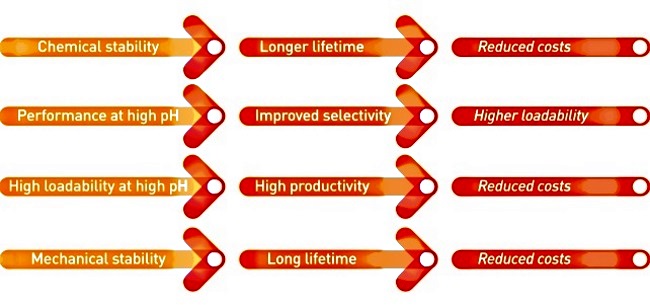
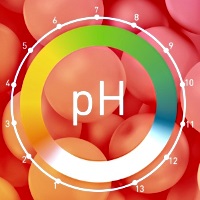
|

|

|
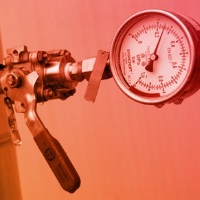
|
|
|
|
|
|
|
Kromasil EternityXT builds upon the legacy of the Kromasil Classic silica and
further enhances the performance of preparative chromatography. |
Kromasil Eternity HPLC columns come with particles down to 2.5 μm. EternityXT
extends down to 1.8 μm to fit any UHPLC instrument for better efficiency and
flexibility in the laboratory. |
With the Eternity platform, the boundaries of applicable pH range has moved
beyond what could be expected from the strongest silica matrix. |
Kromasil EternityXT builds upon the legacy of the Kromasil Classic silica and
further enhances the performance of preparative chromatography. |
The Kromasil products platforms

Availability of Kromasil UHPLC,
HPLC and SFC columns
https://www.kromasil.com/products/columns/?classic_promoted

Availability of Kromasil HPLC stationary phases in bulk
https://www.kromasil.com/products/bulk/
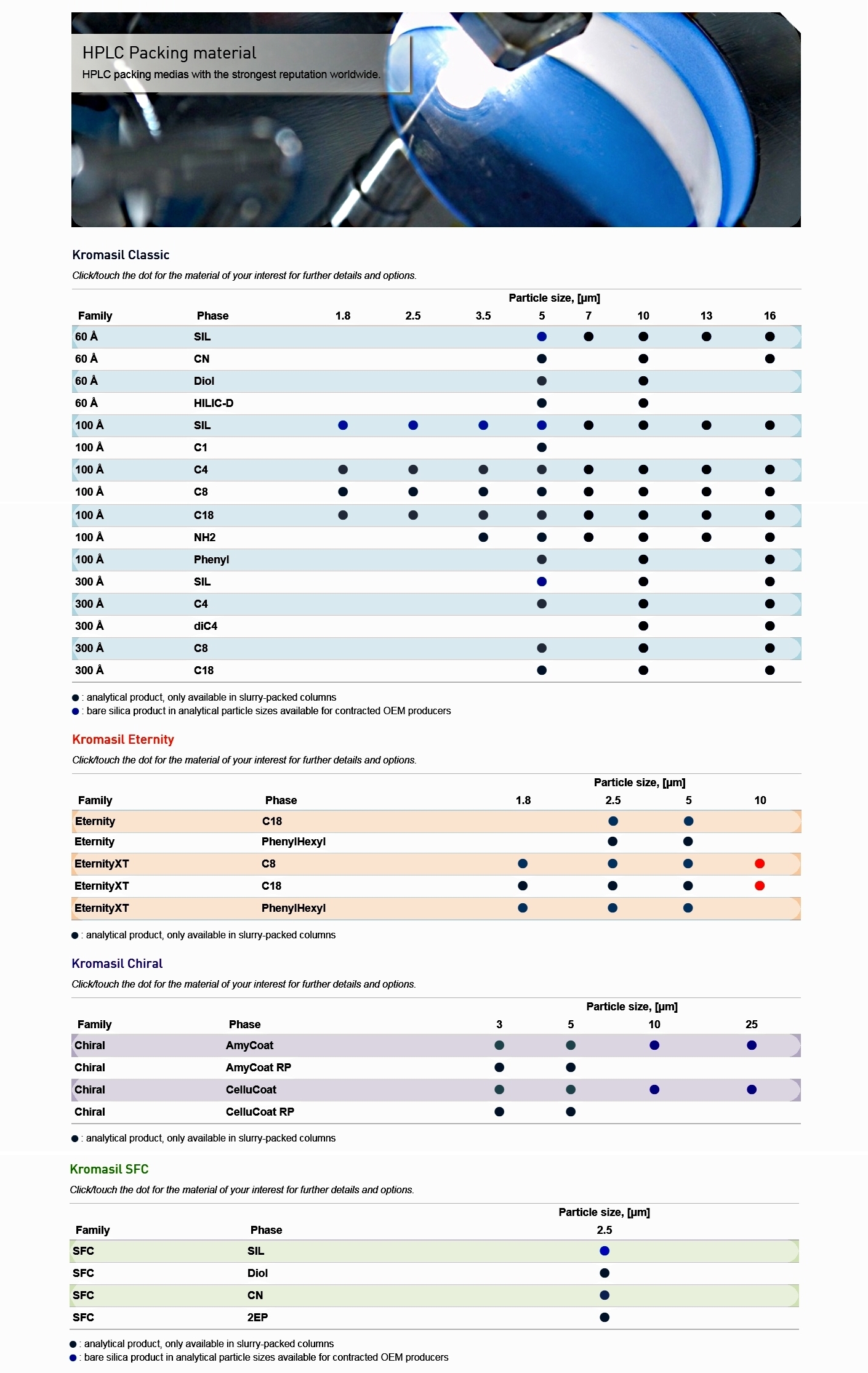
Application Guide and
Search

A collection of application examples from our labs and users all
over the world that can be browsed and serached by application titles and by
substances using specified Kromasil gel item or any phrases.
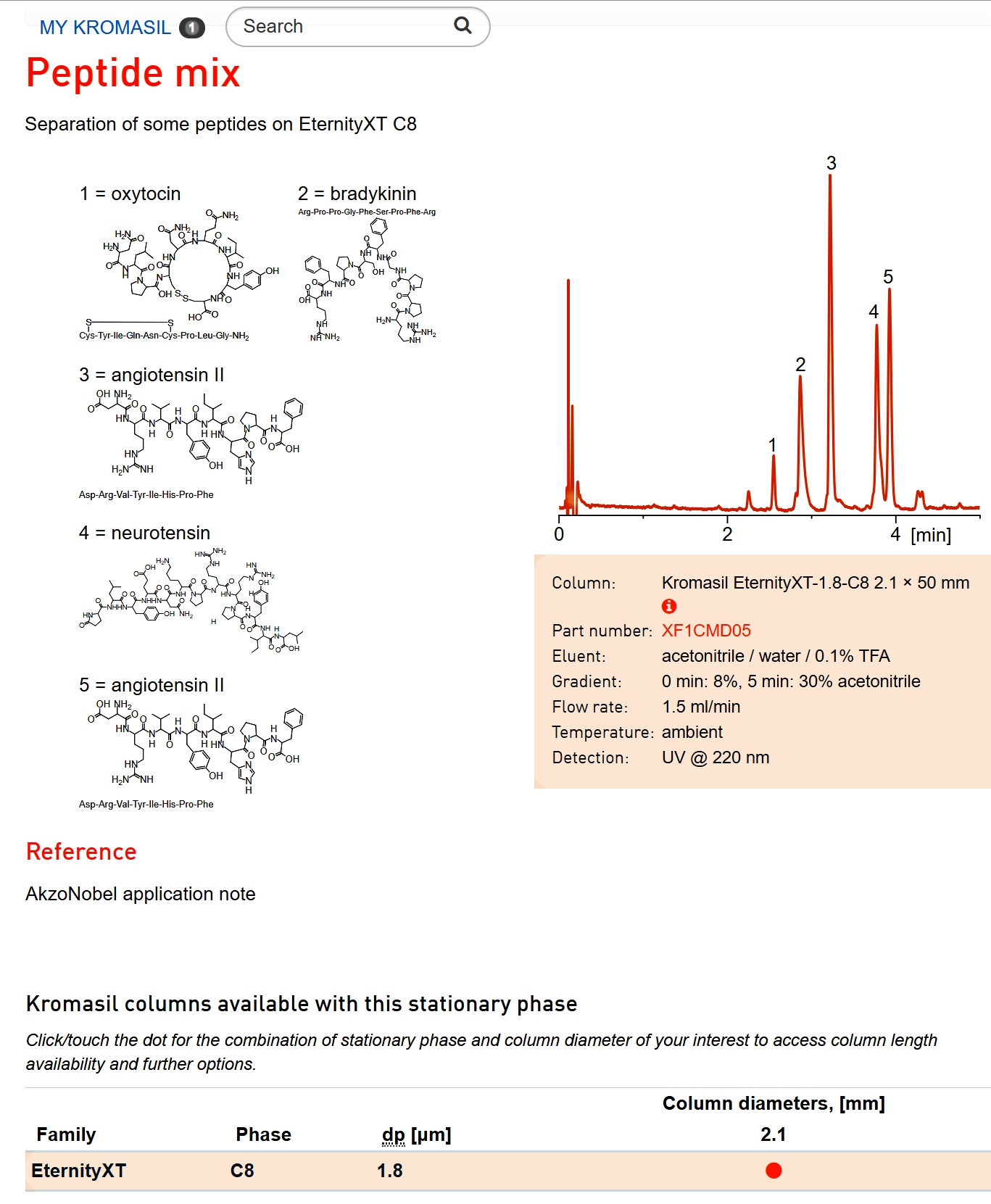
General HPLC support
The Kromasil team is always on hand to help you with questions and
problems. With a breadth of experience in separation around the world, our
chemists or chemical engineers can usually pinpoint the problem. Please, do not
hesitate to contact us if you need answers too difficult questions concerning
chromatography. However, we will try to help you right at this moment by giving
you some hints on how to solve common problems
Instructions
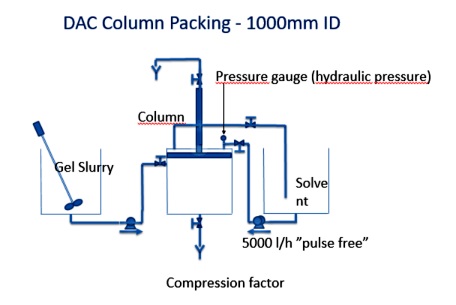
|
DAC Packing General instructions for packing Kromasil media in Dynamic Axial
Compression (DAC) columns |
|
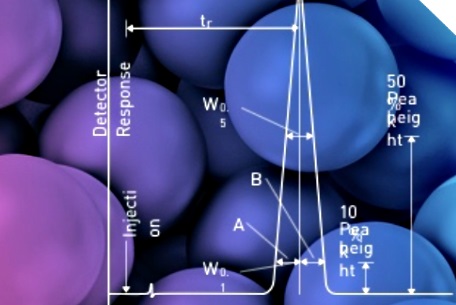
|
Care and use of Kromasil HPLC columns All Kromasil columns are individually
manufactured and tested to meet strict specification criteria. The following
measures will enhance their performance and lifetime.
|
|
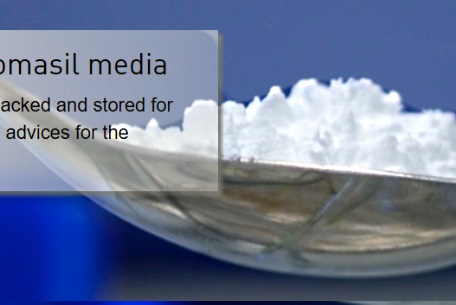
|
Unpacking of Kromasil media Kromasil silica is superior when it comes to
mechanical and chemical stability, and can therefore, under most circumstances,
be reused over and over again. Kromasil can be stored either as a dry powder, or
in a solvent. For storing the silica in a solvent it is recommended that you
unpack and store the used silica in the solvent that you later will use in the
packing process as a slurry solvent. For recommended slurry solvents please see
our packing instructions.
|
|
Tools : KromaSwitch - Cross references to Kromasil
products

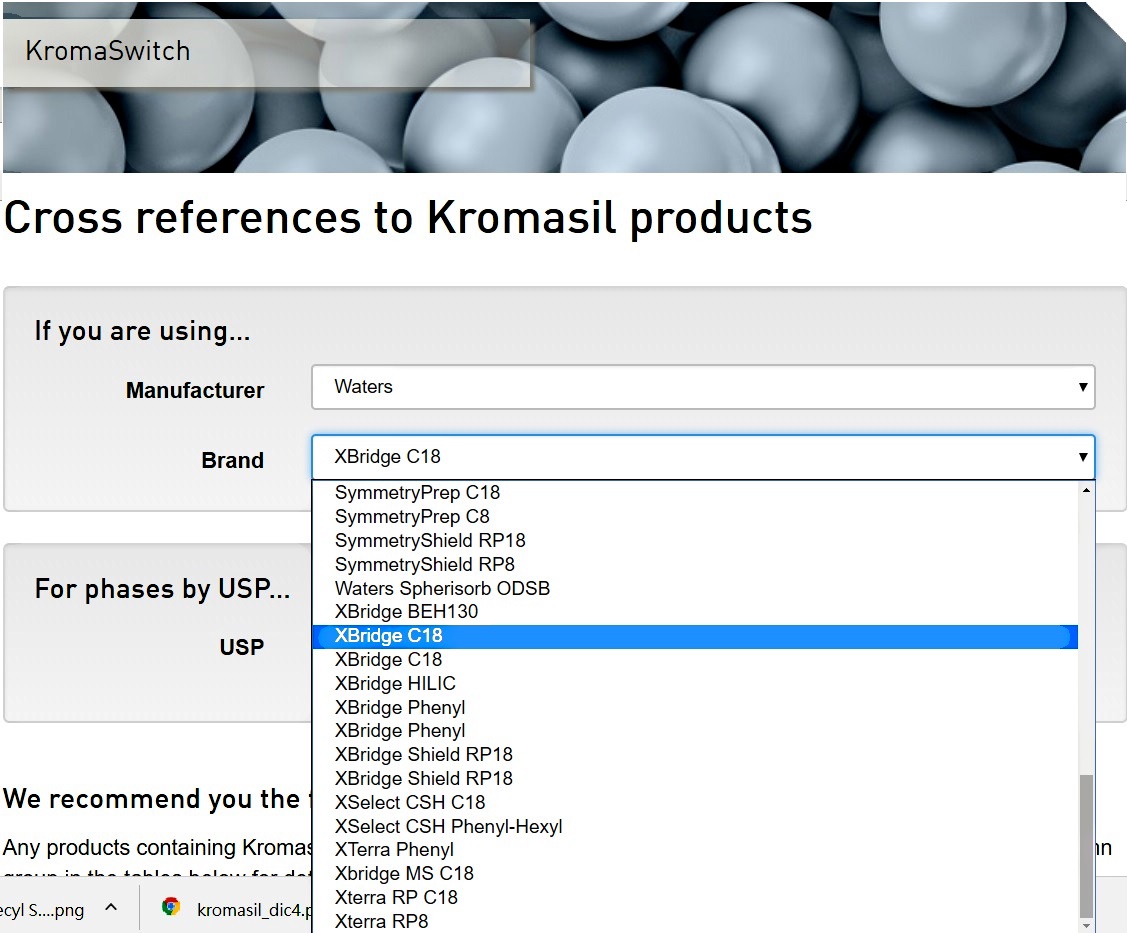
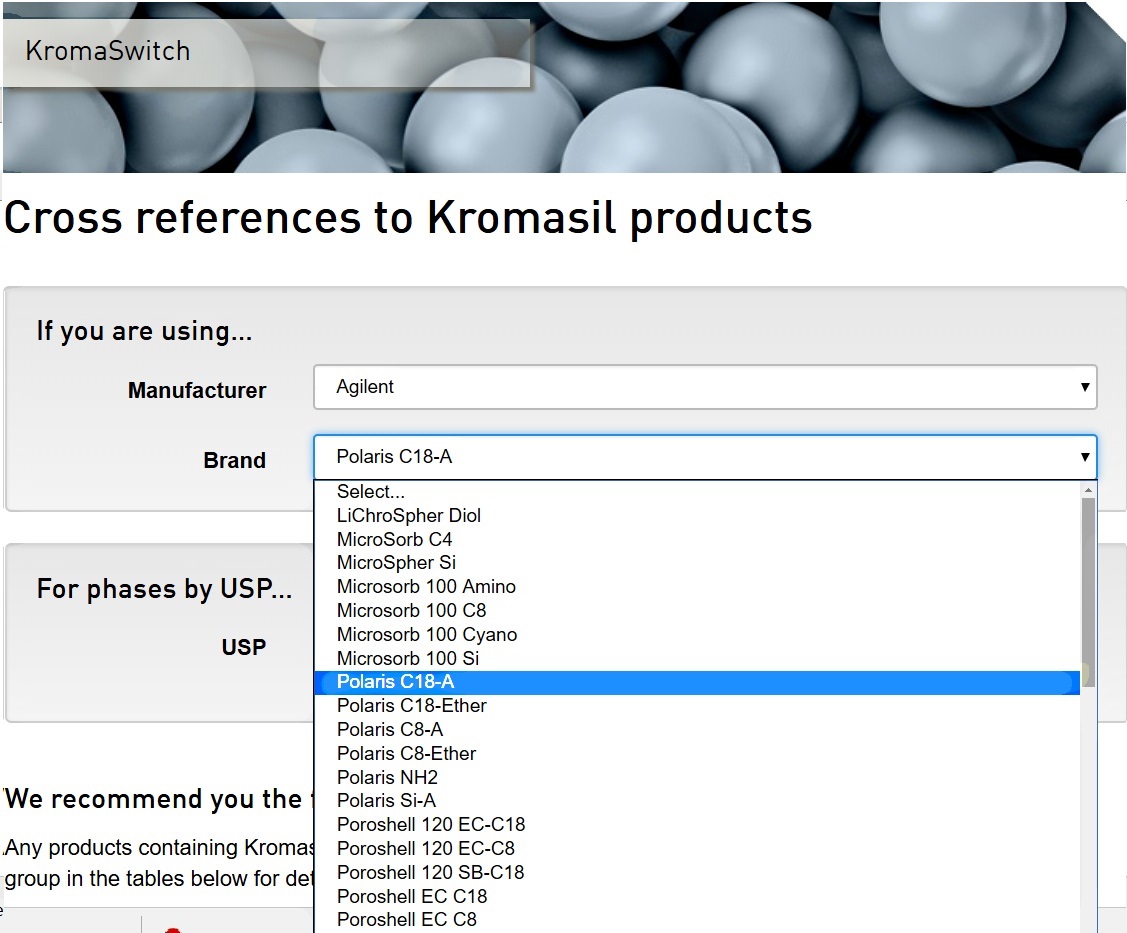
Kromasil notes

|
Using EternityXT stationary
phase for analysis and purification under reversed-phase chromatography
Silica based chromatography materials are typically considered stable in the
range of pH 2 to pH 8 and separations and purifications are usually carried out
under these conditions. However, there are applications where higher pH could be
used to achieve better purifications to attain higher purity and/or yield.
EternityXT stationary phase materials are ideal for production facilities that
need to work with an extended range of pH because it is stable under low and
high pH conditions. |

|
On the purification of 100’s
potential API candidates by reversed-phase preparative chromatography
UCB is a global biopharmaceutical company dedicated to the research, development
and commercialization of innovative medicines with a focus on the fields of
central nervous system disorders and immunology disorders. At UCB Biopharma in
Braine-l’Alleud (Belgium), one of the two research centers, day after day,
numerous intermediates and potential Active Pharmaceutical Ingredient (API)
candidates are sent to the Preparative Chromatography Team for purification. |

|
Improved loadability for
basic APIs - run at high pH
The main proportion of all synthetic pharmaceutical APIs are basic in nature,
and will in many cases exhibit an increased loadability, and hence productivity,
at high pH. Basic peptides, oligos, PNAs, etc, will also benefit from high pH
separation methods. |

|
A brief history of
preparative liquid chromatography
Traditional preparative liquid chromatography was born in 1903 when the Russian
botanist M. Twsett made the first separation of carotene pigments. The columns
he used were made of glass, they were packed with gravels and were basically
operated at atmospheric pressure. This situation kept unchanged for many years,
until the 1960’s when organic chemists began to use stainless steel columns
operated at a few bars. |

|
Separation of fish oil esters
EPA and DHA on Kromasil C18
A nice scale-up example from column i.d. 4.6 to 21.2 mm. |

|
Of pH and adsorption
isotherms
In the last issue of KromaNews we looked at the importance of performing
overloading studies during preparative HPLC method development. It was shown
that switching the stationary phase, while keeping all other chromatographic
parameters constant, altered the non-linear adsorption behavior. In this issue,
the adsorption behavior of a peptide on the stationary phase at different buffer
pH will be shown. |

|
The art of packing DAC
columns – some hints and advice
In order to have a seamless and problem-free scale-up, and to be able to
establish an efficient and cost-effective production, one must assure that the
large scale column used is packed with the same high efficiency as the column
used for the method development. And this can relatively easy be done with
today´s DAC columns available on the market! |

|
The importance of overloading
studies in method development – a case study
Preparative HPLC differs from analytical HPLC since it needs to be performed in
the nonlinear part of the adsorption isotherm in order to maximize important
parameters such as column loading and productivity. In preparative HPLC, method
development screening is commonly performed with analytical injections. This
makes it possible to establish and compare selectivity in different
chromatographic systems. From the screening, one or more candidate phases are
selected for a closer preparative study with overloaded injections. This case
study illustrates the risk of relying only on selectivity during preparative
method development. The scope of the study was to separate an API (Mw ≈ 900
g/mol) from its impurities and achieve 99.0% purity with as high productivity as
possible |

|
Kromasil preparative HPLC
applications – success stories 2. Purification of orlistat
Obesity has developed into a severe, global health problem during the last
decades, and as a result pharmaceutical companies have tried to develop a remedy
for obesity, that can be used in combination with dieting and physical exercise.
The one medication currently available and approved for long-term use is an
anti-obesity drug marketed as Xenical or Alli. The API in the drug is Orlistat,
also known as tetrahydrolipstatin. |

|
Pharmaceutical company uses
Kromasil's method development expertise to improve productivity in its
purification process
In recent years, India has proven to be an area of strong growth in the peptide
market. Numerous Indian companies are developing biosimilars while several
others are focusing on research and development (R&D) of novel therapeutic
peptides. Issar Pharmaceuticals, located in the Hyderabad, India is an example
of a company that has specialized in providing novel therapeutic peptides. The
company has successfully synthesized a number of promising peptides in its
pipeline, most notably being the Melgain®, which was commercialized in 2004. |

|
Scaling methodology in
preparative batch HPLC
One of the beauties of purification using preparative HPLC is the simplicity of
how scaling of a separation rocess is made. This article will give you an
insight into how this is done, and which difficulties may occur. |

|
Kromasil preparative HPLC
applications – success stories 1. Purification of insulin
Kromasil packing media are today the dominating materials used for large-scale
production of human insulin and variants, among many other applications.
Multi-ton volumes of Kromasil per year are used globally to produce these APIs,
with high purity demands. This article will show an example of the development
work that has been performed to facilitate cost-effective processes for the
final purification of human insulin, and to service our customers in order to
lower their costs. |
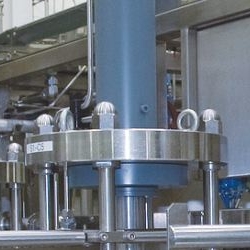
|
HPLC, a rapid development and
a robust production process to purify APIs
With over 25 years of expertise in the development of preparative chromatography
equipment and purification processes, Novasep has pioneered the field of
industrial HPLC including both batch and continuous (SMB) technologies. Within
recently extended facilities in Shanghai, the company offers process development
and scale-up services for the production of APIs under cGMP conditions. |

|
Why you can't have your cake
and eat it too
In order to develop a successful preparative HPLC method one first needs to
define relevant goals for the specific purification. The most important and
common parameters defining the quality of a separation is loading (defined as
mcrude/mresin), purity and yield. Purity is usually already defined by
regulatory agencies (such as FDA or equivalent) and often includes area
percentage of product as well as individual impurities, while yield simply is
the ratio of purified product divided by amount loaded onto the column. |

|
The importance of a
chemically stable HPLC packing material
In preparative chromatography it is of uttermost importance that all parameters
are optimized to give the lowest possible cost for the target substance
purified. We have in previous articles described the importance of optimization
of the HPLC separation. However, another factor that could greatly influence
your separation cost is the lifetime of the packing material. To run the
separation using a stable packing material will not only result in a lower cost
due to a longer lifetime of the packing material, but the separation can also be
run with less disturbances, with more stable conditions for a long time.
|

|
Outsourced production – an
opportunity for CMOs
Major changes are occurring in the development of new therapeutics within large
pharmaceutical and biotechnology companies. These companies are becoming leaner
and rely more on outsourcing, anything from analytical methods to full-scale
contract production. With the change in paradigm there is a need for contract
manufacturers (CMOs) to expand their services and guarantee quality work.
Experience allows for contract manufacturing companies to deliver anything from
robust analytical methods to purified APIs at a reasonable cost. |

|
Gradient or isocratic elution
in preparative reversed phase HPLC
A common question that often arises in the discussion between prep
chromatographers is when and why one should choose either isocratic or gradient
elution? Since we in the Kromasil group have a long experience of developing
large scale separations we would like to share some of these experiences with
the readers of KromaNews. |

|
Basic methodology for method
development in preparative HPLC
Quite often one meets people with excellent knowledge and experience in
analytical HPLC, and while much theory and underlying equations can be used on a
preparative scale, a lot may differ. The main difference is the scope of the
separation. In analytical chromatography you are most certainly looking for
information in some way, either identification or quantification (or both) of
one or several peaks in one chromatogram. However, in preparative chromatography
the isolation of a single substance at a certain purity is usually the main
goal. This difference has a large impact on how to develop the chromatographic
method in order to optimize factors such as yield, purity and loadability. |

|
Recent changes: the former
and the new General Manager
During the last one and a half years Separation Products has undergone some
important changes, as Domingo Sanchez, one of the founders of the group, has
retired as General Manager. Domingo is now replaced by Sylvia Winkel Pettersson,
who has been working in the Kromasil group since 1999 in different positions.
Sylvia hence has a strong background and experiences to support her as
Separation Products' new General Manager.. |

|
Buffer Capacity – an
underestimated parameter in prep RP-HPLC
.. |

|
Optimization in Prep HPLC
The recent years has seen a tremendous increase in the use of Industrial Scale
HPLC, especially in emerging countries like India and China. Many large DAC
columns have been installed, and are run using short bed lengths, together with
small, spherical, silica-based particles, and relatively high flow rates. This
is what we call the High Performance Concept in preparative HPLC. |

|
Exploring the limits in
Brazil
Separation Products has had a long collaboration with the group of Professor
Cesar Santana at the Universidade Estadual de Campinas in Brazil. Professor
Santana and his group have produced several scientific papers in the field of
large scale purification of enantiomers. We are now proud to give the readers of
KromaNews a flavor of the work of Professor Santana's group and some nice
pictures from the lovely group in Brazil. |

|
Give a little, gain a lot
Kromasil offers the lowest possible total separation cost by providing the best
silica-based HPLC, SMB and SFC packing material. Superior loadability and
lifetime let you boost productivity and reduce costs. |

|
Excluding additives in chiral
preparative separations
Mobile phase additives are commonly used in analytical chiral separations
without trouble. But in preparative scale, additives make solvent recycling
tricky and can cause re-racemization. By using Kromasil AmyCoat or CelluCoat it
is possible to exclude additives in chiral preparative separations. |
Publication details : Kromasil Guide
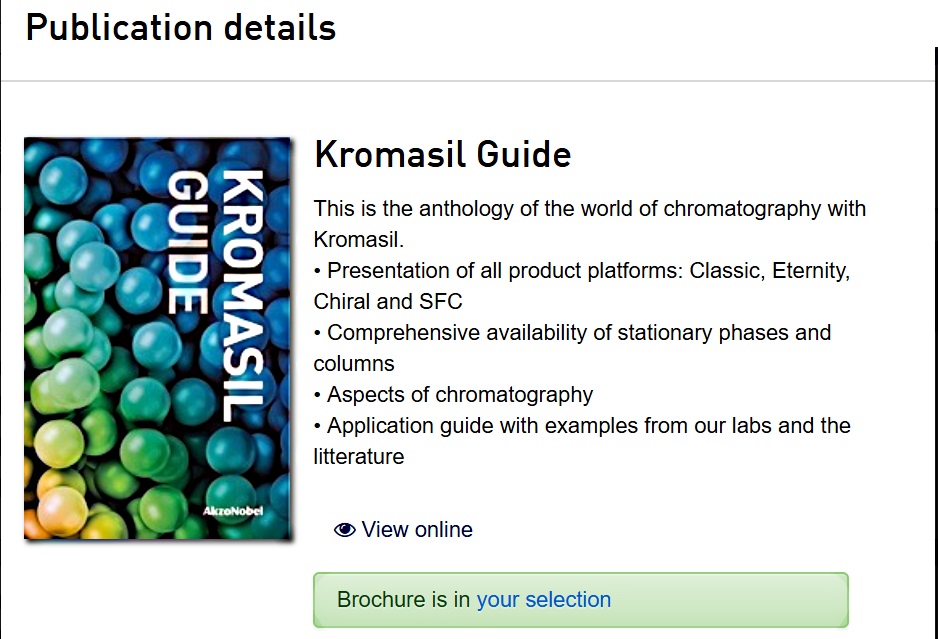
Our brands - AkzoNobel
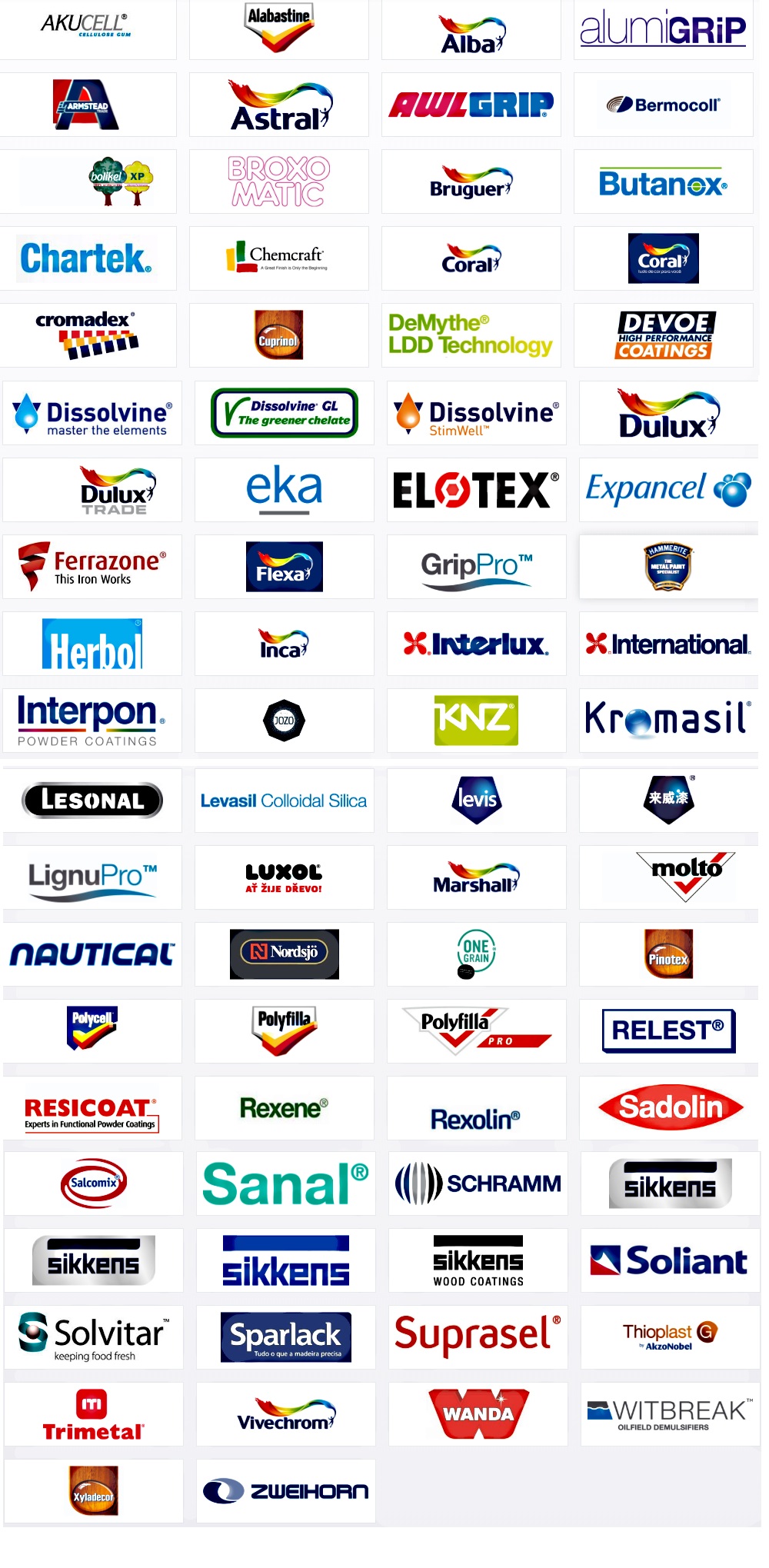
|